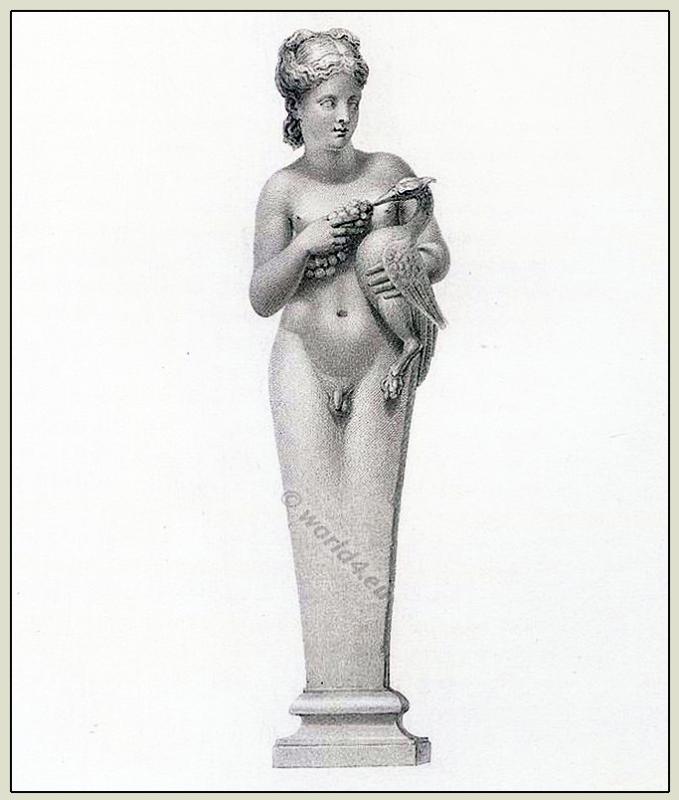Hermaphrodite with bird
Hermaphroditos, the son of the Greek god Hermes and the goddess Aphrodite.
A terminal statue of an Hermaphrodite. The human body extends downwards as low as the hips, whence it gradually assumes the form of a square pilaster diminishing in size towards the base. The hair is divided along the top of the head, the front and side locks are drawn together and turned up towards the back of the head, where they are tied into a knot; behind, the hair is combed straight down towards the neck, where it is collected into a thick bunch of curls almost resembling flowers. The body is entirely unclothed.
The right hand holds a large bunch of grapes to feed a bird which is held in the left hand. Of this bird, the head, neck and leg are restored, and to them the modern artist has given the form of those parts of an Ibis. It is not very easy to ascertain what description of bird was originally intended, but it resembles a goose, at least as much as any other fowl, and though such a bird does not appear to be peculiarly entitled to caresses, yet it is sometimes so honoured by Cupid.
In the British Museum is a small bronze statue of Cupid caressing a goose, among the bronzes found at Pompeii a small figure of this god holding a goose in his arms; he is so represented on a bronze lamp in the Museum at Naples, and in the British Museum is a small silver figure of a naked boy similarly engaged. Pliny speaks of a group of a boy strangling a goose, the work of Boethus, and this is the subject of a little bronze figure in the Museum, and of another of a youth in marble in the Museum at Naples.
Whether these groups had any symbolical meaning it is not safe to assert, as various authors who have thought the subject worthy of their attention have differed in their interpretations, and have suggested explanations which do not convey conviction to the readers. It only remains then to describe these subjects as they appear before us, leaving to each person the privilege of indulging his ingenuity in discovering the artist’s latent intentions.
This figure, the upper part of which takes the form of a young girl, is well but not finely executed; and its general appearance is damaged from the discoloration it has suffered from having long lain amongst a quantity of decayed wood in a swamp near the lake of Nemi in the neighbourhood of Rome, where it was discovered in the year 1774.
Height of antique portion 3 ft. 4 1/2 inch.
Source: A description of the collection of ancient Marbles in the British Museum by Combe Taylor, London 1861.
[wpucv_list id=”136457″ title=”Classic grid with thumbs 2″]Related
Discover more from World4 Costume Culture History
Subscribe to get the latest posts sent to your email.



